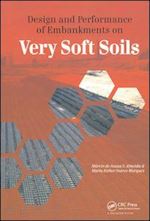Márcio Almeida earned his Civil Engineering degree at the Federal University of Rio de Janeiro, in 1974 and obtained his MSc at COPPE/UFRJ in 1977 when he joined COPPE as Assistant Lecturer. Marcio got his PhD from the University of Cambridge, UK in 1984. Then he returned to UFRJ and in 1994 became Professor of GeotechnicalEngineering. His postdocs were in Italy (ISMES) and at NGI, Norway in the early 1990s and he was also visiting researcher at the universities of Oxford, Western Australia and ETH, Zurich. He is currently one of the leading researchers of the National Institute of Science and Technology – Rehabilitation of Slopes and Plains (INCT-REAGEO). He has been the Director of COPPE’s MBA “Post-Graduate Program in Environment’’ since 1998. He has published numerous articles in journals and conferences in Brazil and abroad and has supervised over 60 doctoral and master dissertations. He received the Terzaghi and Jose Machado awards from the Brazilian Association of Soil Mechanics and Geotechnical Engineering (ABMS). His experience ranges from soft clay engineering, environmental and marine geotechnics tosite investigation, physical and numerical modeling as well as extensive experience in geotechnical consulting. Esther Marques holds a degree in Civil Engineering – emphasis in Soil Mechanics, from UFRJ. She obtained her MA and PhD in Civil Engineering from COPPE/UFRJ, with researches conducted at Université Laval, Canada. She worked at Tecnosolo and Serla and was a researcher at COPPE/UFRJ from 2001 to 2007. She is currently an associated professor at the Institute of Military Engineering, where she teaches undergraduate and graduate Transportation Engineering and Defence Engineering. She has experience in Civil Engineering with emphasis in Soil Mechanics, working mainly with the following: laboratory testing, field-testing, instrumentation, soft soils behavior, embankments on soft soils and environmental geotechnics.











